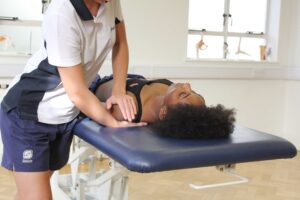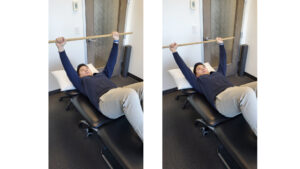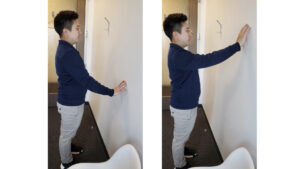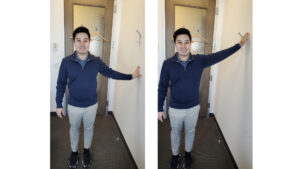There are a number of surgeries to stabilize the shoulder and repair tendons and ligaments of the shoulder. Common surgeries include rotator cuff tear repairs and shoulder stabilization surgery (Latarjet procedure) to stabilize frequently dislocating shoulders. Often these procedures are performed arthroscopically leaving only small scars. After surgery the shoulder can be sore, stiff, and inflamed. Your physiotherapist will work with you to help manage your pain and inflammation with gentle hands on treatment.

Your physiotherapist will work with your surgeon and follow their rehabilitation protocol to help you recover. Simple activities such as dressing, bathing, and sleeping could be difficult after surgery and your physiotherapist can help guide you on how to adapt and perform these tasks. Physiotherapy will initially focus on improving your shoulder flexibility and strength and as you progress your physiotherapist will customize your treatment to help you reach your individualized goals.
Common Home Exercises:
Active Assisted Flexion
This exercise involves using your non-injured arm and a stick to help move the post surgical arm through its range of motion. Here’s how to perform active assisted flexion:
- Lie on your back
- Hold a stick with both hands, palms facing down.
- Start with your arms extended straight out in front of you at shoulder level.
- Slowly raise the post surgical arm upward, with the assistance of the non-injured arm
- Move the arm as far as is comfortable, aiming for a gentle stretch and only mild pain.
- Hold the end position for a few seconds.
- Slowly lower the arm back to the starting position.
- Repeat the movement for 6-12 repetitions and 3 sets
It’s essential to maintain control throughout the movement and avoid jerky or forceful motions. The assisting arm should provide just enough support to help the post surgical arm through its range of motion with only mild discomfort. Over time, as strength and flexibility improve, you can gradually reduce the amount of assistance provided by the non-injured arm.

Wall Crawls for Flexion
- Stand facing a wall, about arm’s length away.
- Place your palm flat against the wall at waist level.
- Slowly walk your fingers up the wall as high as you can comfortably reach while keeping your arm straight.
- Hold the stretched position for a few seconds.
- Slowly slide your hand back down the wall to the starting position.
- Repeat the movement for 6-12 repetitions and 3 sets

Wall Crawl for Abduction
- Stand facing perpendicular to the wall, about arm’s length away.
- Place your palm flat against the wall at waist level.
- Slowly walk your fingers up the wall as high as you can comfortably reach while keeping your arm straight.
- Hold the stretched position for a few seconds.
- Slowly slide your hand back down the wall to the starting position.
- Repeat the movement for 6-12 repetitions and 3 sets


